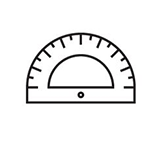성게화석(Fossil Sand Dollar) 
| 국내/해외배송 | |
|---|---|
| 배송비 방법 | 택배 |
| 배송비 | 4,000원 (50,000원 이상 구매 시 무료) |
| 수량 |
|
| 상품 정보 | 가격 | 삭제 |
|---|---|---|
| [총 상품금액(수량)] 0 (0개) | ||
일반명 : 성게화석(Sand Dollar)
지질시대(Age) : 신생대 올리고세(Oligocene Epoch/약3천만년전)
학명(Classification) : Scutelle sp.
원산지(Location) : Dinan, France
2 sand dollars in matrix, one 2 5/8 inches diameter and the other 2 3/8 diameter
Hello, This beautiful polished fossilized Echinoderm is From Helvetia,Tours, France. This fossil specimen is in the same family as Starfish and Sand Dollars. The surface is domed and highly polished for excellent viewing properties and beauty. This Echinoderm specimen is in excellent condition with clean lines against a medium yellow background. This specimen measures about 2.7 inches by 2.7 inches by .75 inches thick and weighs about 111 Grams or 3.9 Ounces. We are miners bringing you these specimens directly from the earth. We are natives of western and mid western states with historic mining, mineral and geological occurrences.
sea urchin/echinoid
Sea urchins are spiny sea creatures of the class Echinoidea found in oceans all over the world. (The name urchin is an Old English name for the round spiny hedgehogs sea urchins resemble). Their shell, which biologists call the test, is globular in shape and covered with spines. The size of an adult test is typically from 3 to 10 cm (1-4 in.).
Typical sea urchins have spines 1-2 cm (approximately ½ to 1 in.) in length (e.g. "Sea urchin", right), a millimeter or two thick, and not terribly sharp. Diadema antillarum, familiar in the Caribbean, has thin spines that can be 10-20 cm long (4-8 in.). Common colors include black and dull shades of green, olive, brown, purple, and red.
Sea urchins are members of the phylum Echinodermata, which also includes starfish, sea cucumbers, brittle stars, and crinoids. Like other echinoderms they have five-fold symmetry (called pentamerism) and move by means of hundreds of tiny, transparent, adhesive "tube feet". The pentamerous symmetry is not obvious at a casual glance, but is easily seen in the dried shell of the urchin (see picture below, right).
Within the echinoderms, sea urchins are classified as echinoids (class Echinoidea). Specifically, the term "sea urchin" refers to the "regular echinoids," which are symmetrical and globular. The ordinary phrase "sea urchin" actually includes several different taxonomic groups: the Echinoida and the Cidaroida or "slate-pencil urchins", which have very thick, blunt spines (see image at right), and others (see taxonomic box on the right). Besides sea urchins, the Echinoidea also includes three groups of "irregular" echinoids: flattened sand dollars, sea biscuits, and heart urchins.















 확대보기 및 상세정보
확대보기 및 상세정보